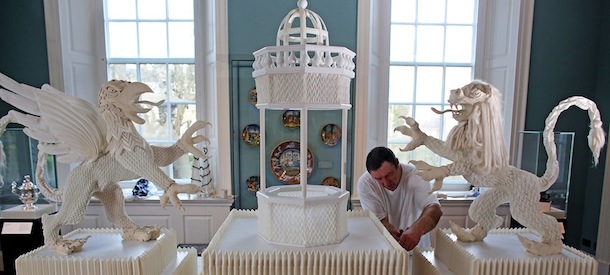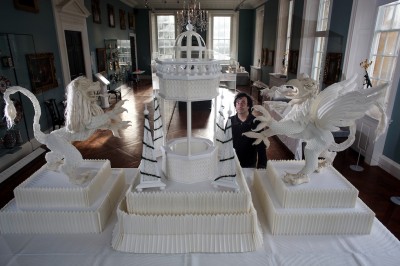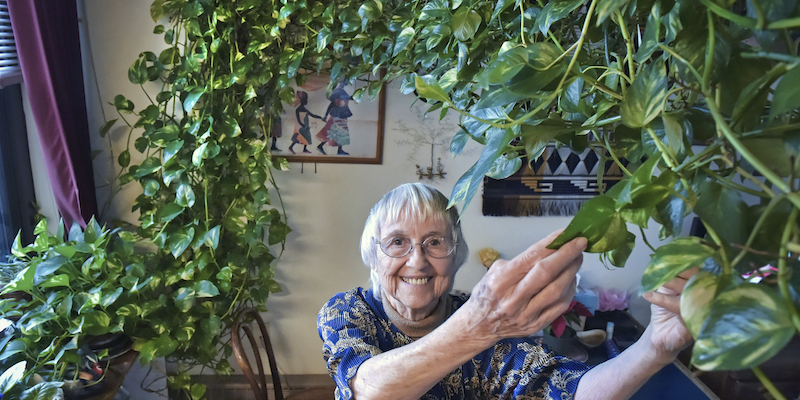Sculture di tovaglioli ripiegati
Le foto delle opere di Joan Sallas, che si ispira a un'arte molto diffusa durante il Rinascimento italiano e nella Germania del XVII secolo

altre
foto
Dal 3 febbraio al 28 aprile l’Holburne Museum di Bath, in Inghilterra, ospiterà la mostra Folded Beauty: Masterpieces in Linen (L’arte piegata: capolavori in lino), che espone le elaborate opere realizzate dall’artista spagnolo Joan Sallas piegando meticolosamente dei tovaglioli in lino. L’arte di piegare tovaglioli per abbellire le tavole delle corti e delle più ricche case europee si diffuse nel Medioevo, divenne sempre più raffinata durante il Rinascimento italiano e toccò il suo apice nel XVII secolo in Germania. Sallas – un artista catalano che vive in Germania – ha iniziato a lavorare con gli origami finché non ha scoperto l’esistenza dell’arte di piegare i tovaglioli: fece numerose ricerche, studiò i manuali dell’epoca e diventò il principale esperto in materia, imparando a riprodurre perfettamente gli originali. A gennaio Sallas ha lavorato insieme al suo assistente per realizzare all’interno del museo di Bath una fontana da tavolo alta 1,5 metri e fiancheggiata da animali, tra cui un serpente di tre metri, piante ed elementi architettonici, tutti ispirati a modelli originali.














